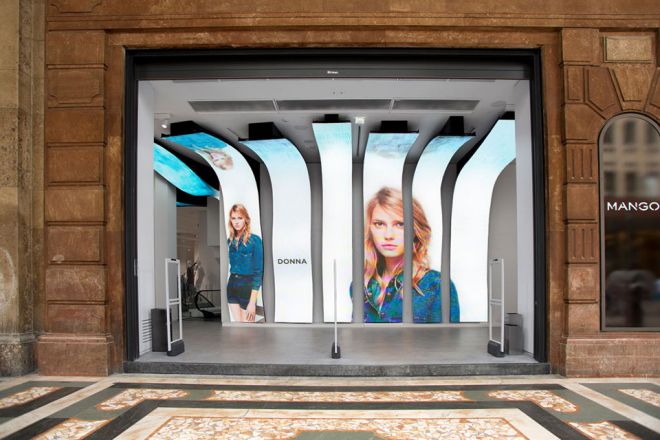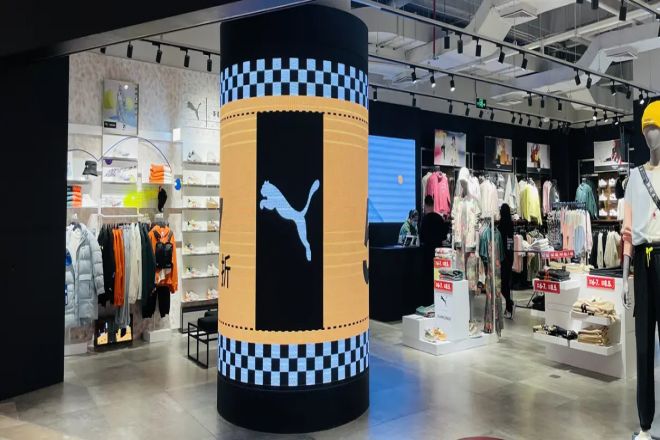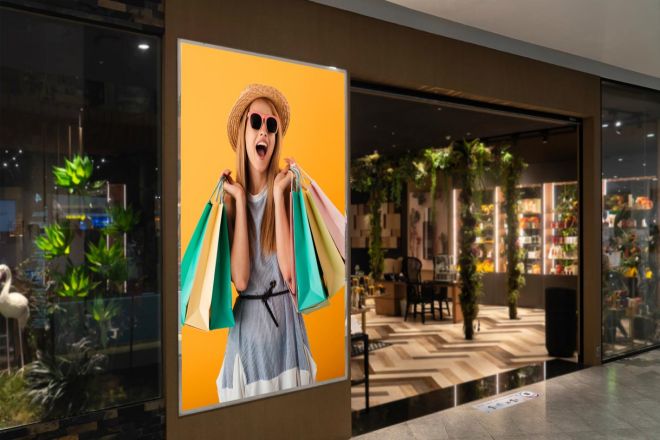Introduction

With the rapid development of science and technology, LED display screens, as an efficient and intuitive information dissemination medium, have penetrated into all aspects of our lives.
Whether it is a bustling commercial district, a crowded transportation hub, a solemn government agency, or a vibrant campus, LED display screens have become an important window for information transmission with their unique charm and practicality. However, with the increasing number of LED display screens, how to ensure the effectiveness of their content and make them truly play their due value has become a problem we have to face.
1. Diversity and Impact of LED Display Content
1). Overview of Content Diversity
LED display screens play a multifunctional role in modern society, and the content they display is rich and diverse, covering multiple fields. The following are some common types of LED display content:
Advertisement: LED display screens are an important platform for advertisers to display their products or services. From fashion apparel to electronic products, from catering to tourism, the content of advertisements is diverse and aims to attract the attention of potential consumers.
Announcement: Government agencies, public utilities or enterprises often use LED display screens to publish various announcements, such as traffic information, emergency notices, event previews, etc., in order to quickly and effectively convey information to the public.
News: LED screens are also often used for news broadcasts, updating important news events at home and abroad in real-time so that viewers can keep up to date with the latest current events.
Cultural display: Museums, art galleries, and other cultural institutions use LED screens to display artworks, historical photos, etc., providing audiences with a rich cultural experience.
These different types of content not only enrich the presentation of LED screens but also meet the needs of different audiences. Different types of content have different appeals and influences on the audience, and they need to be planned in a targeted manner according to specific scenarios and target audiences.
2). The impact of content quality on audience experience
The content quality of LED screens directly affects the audience’s viewing experience and acceptance. High-quality content can attract the audience’s attention, increase their attention to LED screens, and thus enhance the dissemination effect of information.
- High-quality content:
When the content displayed on the LED screen is clear, accurate, interesting, and creative, the audience will be more easily attracted and interested. Such content can quickly catch the audience’s eye, making them willing to stop and watch and think deeply.
At the same time, high-quality content can also enhance brand image and public awareness, and win a good reputation for enterprises or institutions.
- Low-quality content:
On the contrary, if the content displayed on the LED display is of low quality, such as vague information, frequent typos, and boring content, the audience is likely to be disappointed and quickly leave. Such content not only fails to attract the audience’s attention but may also have a negative impact on the brand image and public perception.
Therefore, when planning the content of the LED display, it is necessary to focus on the quality and creativity of the content to ensure that it can bring a good viewing experience to the audience.
2. The core position of effective information in the content of the LED display

1). Definition and characteristics of effective information
Effective information refers to the information displayed on the LED display that can accurately, clearly, and promptly convey information to the audience and meet their needs or expectations.
It is clearly different from redundant information. Redundant information refers to information that is repeated, irrelevant, or overly complex. They not only fail to enhance the value of the information but also reduce the audience’s attention and understanding.
The characteristics of effective information are mainly reflected in the following aspects:
Clarity: Effective information must be clear and avoid using vague and ambiguous words or expressions to ensure that the audience can quickly understand the content of the information.
Accuracy: The transmission of effective information must be accurate, avoid misleading or ambiguous, and ensure that the audience can receive the correct information.
Timeliness: Effective information should be able to quickly reflect the current situation or event to ensure that the audience can obtain the latest information in a timely manner.
2). The impact of effective information on the efficiency of information transmission
The core position of effective information in the content of LED display screens is that it can be quickly and accurately conveyed to the audience, thereby improving the efficiency of information transmission. When the audience receives clear, accurate, and timely effective information, they can quickly understand and respond accordingly, thereby achieving effective information transmission.
In contrast, invalid information will hinder the efficiency of information transmission. Invalid information may contain erroneous, outdated, or irrelevant content, which not only fails to meet the needs of the audience but also may mislead the audience or reduce their attention.
Therefore, in the planning of LED display content, attention should be paid to screening and refining effective information to avoid interference from invalid information.
3). The impact of effective information on brand image and public cognition
High-quality, effective information can not only improve the efficiency of information transmission but also have a positive impact on brand image and public cognition.
When companies or individuals display high-quality and effective information through LED display screens, they can better convey their brand concepts and values, thereby enhancing brand image and recognition.
On the contrary, if the LED display screen displays invalid or low-quality information, the audience may have a negative impression of the brand of the company or individual, and even lead to misunderstandings and negative evaluations.
Therefore, in the planning of LED display screen content, attention should be paid to the quality and value of information to ensure that the information displayed can truly meet the needs of the audience and enhance the brand image.
3. Strategies to enhance the effective information of LED display screen content
1). Content planning and screening
When planning the content of LED display screens, the first task is to ensure the effectiveness and pertinence of the information. This requires planners to have a deep understanding of the needs and interests of the target audience in order to provide them with valuable information. In order to improve the quality of content, we need to take a series of screening measures to eliminate redundant information:
Clear target audience: determine who the viewers of the LED display screen are, their age, gender, interests, and other characteristics, so as to develop a content strategy that meets their needs.
Screen information sources: select reliable and authoritative information sources to ensure the accuracy and credibility of the information.
Streamline content: avoid lengthy and complex sentences, use concise and clear language, and highlight the core points of the information.
Regular review: Regularly review the content of the LED display screen and promptly remove outdated or invalid information.
2). Real-time updates and adjustment
Due to changes in current affairs and the diversity of audience feedback, the content of the LED display screen needs to be updated and adjusted in real-time. This not only ensures the timeliness and accuracy of the information but also improves the audience’s participation and attention. Here are some strategies:
Pay attention to current hotspots: Capture current hotspots in a timely manner, integrate relevant information into the content of the LED display screen, and improve the timeliness of information.
Collect audience feedback: Collect audience feedback on the content of the LED display screen through questionnaires, online interactions, etc., to understand their needs and preferences.
Adjust content strategy: According to audience feedback and changes in current affairs, flexibly adjust content strategy to ensure the pertinence and effectiveness of information.
3). Interaction and participation
Improving the audience’s attention and participation in the content of the LED display screen is the key to improving the effectiveness of effective information dissemination. By designing interactive links, you can attract the audience’s attention and increase their willingness to participate. Here are some suggestions:
Design interactive games or competitions: Use LED displays to display the rules and processes of interactive games or competitions and encourage audiences to participate and share on social media.
Set up voting sessions: Set up voting sessions for certain topics or events, allowing the audience to vote through the LED display and display the results in real-time.
Provide feedback channels: Set up feedback boxes or provide online feedback channels next to the LED display to facilitate the audience to make comments and suggestions at any time.
4. Case analysis

In order to deeply understand the use of effective information in the content planning of LED display screens, we selected the following successful cases for analysis and summarized the strategies and methods to improve the effective information of LED display screen content.
Case 1: Winter clothing advertising planning for shopping mall LED display screens
Strong targeting: The shopping mall planned targeted advertising content based on the characteristics of holidays, promotions and seasonal products, which effectively attracted the attention of consumers.
Concise and clear information: The advertising content is concise and direct and can quickly convey product information and promotions, making it easier for consumers to quickly understand and make purchasing decisions.
Use of effective information:
Highlight the characteristics of the product, such as “New winter models are on the market, discounts as low as 50% off”, etc., and directly point out the discount information.
Use eye-catching colors and dynamic effects to enhance the visual impact of the advertisement.
Case 2: News broadcast on LED display screen at subway station
Real-time update: The news broadcast on LED display screens at this subway station can update important domestic and foreign news in real-time to ensure the timeliness of the information.
Rich and diverse content: In addition to text news, it also combines pictures, videos, and other forms to improve the audience’s viewing experience.
Use of effective information:
Select news content to ensure the accuracy and authority of information.
Reasonably arrange the order and duration of news broadcasts to ensure that important news is displayed first.
Through the above case analysis, we can summarize the strategies and methods to improve the effective information of LED display content:
Strong targeting: According to the characteristics of the target audience and scene, plan targeted content to ensure that the information can be accurately conveyed to the target audience.
Concise and clear information: Use concise and direct language and expressions, avoid lengthy and complex sentences, and ensure that the information can be quickly understood and accepted by the audience.
Real-time update: According to factors such as changes in current affairs and activity progress, the content of the LED display screen is updated in real-time to ensure the timeliness and accuracy of the information.
Strong interactivity: By designing interactive links and interactive games, the audience’s participation and attention are improved, and the dissemination effect of information is enhanced.
Diversified presentation: Combine text, pictures, videos, and other forms to present content that improves the audience’s viewing experience and interest.
Conclusion
By using these strategies and methods, we can better improve the effectiveness and attractiveness of LED display content, and provide audiences with more valuable information and better viewing experience.
After an in-depth discussion on the importance of effective information in LED display content, it is not difficult to find that the use of effective information plays a vital role in improving the information dissemination effect of LED displays.
It can not only convey information quickly and accurately, increase the audience’s attention and participation, but also effectively shape the brand image and enhance the public’s cognition and trust in information.
Finally, if you want to know more about LED displays, please get in touch with us.
